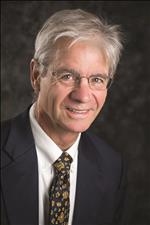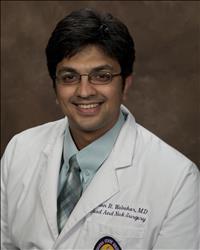Entrepreneurial ENT Surgeons Help Create New Design Studio Within the Office of Innovation and Partnerships
The Office of Innovation and Partnerships (OIP) recently announced the creation of a new unit, the Medical Innovations Design Studio (MIDS), available free of charge to all LSU Health faculty, staff, and students.
 Two experienced LSU Health physician-innovators, in concert with OIP, will work with
individuals who have an idea for a new medical device, app, or other healthcare-related innovation and help move the idea from concept
to market-ready product. Dr. Michael Dunham, one of the two Designers-in-Residence, describes the studio as “a structured environment
for creative and innovative people who have ideas that we can help turn into a real
product. Over the years, people have approached Rohan and me with a daydream. But
the dream has to have dimensions and material specifications. We can help turn a good
idea into a real design.”
Two experienced LSU Health physician-innovators, in concert with OIP, will work with
individuals who have an idea for a new medical device, app, or other healthcare-related innovation and help move the idea from concept
to market-ready product. Dr. Michael Dunham, one of the two Designers-in-Residence, describes the studio as “a structured environment
for creative and innovative people who have ideas that we can help turn into a real
product. Over the years, people have approached Rohan and me with a daydream. But
the dream has to have dimensions and material specifications. We can help turn a good
idea into a real design.”
 Dr. Rohan R. Walvekar, also a Designer-in-Residence, adds, “Everyone is an innovator. The only thing that
separates those of us who have innovated from those of us who haven’t is taking that
first step. We want to help others take that first step and know that this is a resource
within the LSU family, providing a protected environment for their ideas with a clear
pathway for further exploration.”
Dr. Rohan R. Walvekar, also a Designer-in-Residence, adds, “Everyone is an innovator. The only thing that
separates those of us who have innovated from those of us who haven’t is taking that
first step. We want to help others take that first step and know that this is a resource
within the LSU family, providing a protected environment for their ideas with a clear
pathway for further exploration.”
Drs. Dunham and Walvekar are both ENTs and have previously disclosed several medical device-related technologies to the Office of Innovation and Partnerships.
“Dr. Walvekar is an extremely innovative clinician,” said Patrick Reed, Assistant Vice Chancellor of Innovation and Partnerships. “I call him a ‘repeat customer’ because he has disclosed so many innovations.”
Over the years, Dr. Walvekar brought several ideas to Reed that were rough drawings in the initial stage of development. Reed would then take those drawings and look for a local business to prototype it, which often involved overcoming several hurdles between drawing and prototype.
That changed when Dr. Walvekar began to team up with Dr. Dunham.
Dr. Dunham, a pediatric otolaryngologist, also holds a master’s in computer engineering with a concentration in visual computing. He describes his research interests as “computational biology, surgical instrument design, and mathematical modeling.” He has developed surgical simulators for ear and laryngeal surgery, software for artificial intelligence projects, and has previously joined forces with LSU’s mechanical engineers to conduct simulations of bodily fluids.
Dr. Walvekar is triple-fellowship trained in head and neck oncology and a thought leader in the sub-specialty of salivary endoscopy within otolaryngology.
Together, and in just the first two months of the pandemic, the doctors brought seven fully formed device prototypes that protect healthcare workers to the Office of Innovation and Partnerships.
Reed said the two surgeons had already thought through critical concepts such as what type of material a particular device needed to be effective before they even met with him. “What’s great about these sorts of disclosures is that devices, instruments, and software have a much shorter development and regulatory approval timeline before they get to the market,” Reed said. “I’m confident MIDS can help shorten that timeline even more, allowing more LSU Health innovation to enter the marketplace.”
”We put together a bunch of ideas. It became clear to us that we were both passionate about bringing concepts to life, had a love for innovation, and brought to the table different skill sets that complemented each other. So we thought, ‘Why not combine forces and bring our collective skills to other LSU inventors?’” Dr. Walvekar said.
Dr. Walvekar said his inspiration to help create this studio stemmed from the fact that “there is a lot of talent at LSU Health that is currently untapped. We hope to get people excited about medical device innovation and make it easier for them to see their concepts come to life.”
The two ENTs told Reed they wanted to assist others within the LSU Health Sciences Center realize their dreams, and the Medical Innovations Design Studio was born.
“The Design Studio represents the next logical step in expanding the infrastructure that supports campus innovation and relationships with business and industry,” said Dr. Joseph Moerschbaecher, Vice Chancellor for Academic Affairs.
Drs. Walvekar and Dunham will help translate innovators’ ideas through several services that include medical instrument concept and design; CAD modeling and specifications; and optimal material selection and manufacturing specifications. In addition to these services, they will provide basic software development, consultation during the patent drafting process to create a comprehensive description and capabilities document, and assistance with leveraging existing contacts in relevant industries.
The studio has engaged LSU A&M’s Advanced Manufacturing and Machining Facility, which played a key role in LSU’s PPE manufacturing in the PMAC, as a partner. “Rohan and I are clinicians. If someone comes to us with a complicated design, we can get them started, but they are going to need a higher level of engineering work and computations to simulate a design,” Dr. Dunham said. The LSU A&M facility has all the machinery needed to build prototypes and Dimitris Nikitopoulos, Chairman of the Department of Mechanical Engineering and Director of AMMF, has agreed to assist with projects and help the design studio collaborate with faculty in mechanical, electrical, computer and bio engineering. This significantly expands the breath and complexity of designs Drs. Walvekar and Dunham might take on.
Dr. Dunham added, “There have been arrangements in the past between engineering and medical schools, but we are pioneers here at the university level for creating a formal division.”
Dr. Walvekar said that the infrastructure that the Office of Innovation and Partnerships provides will allow clinicians and researchers to focus on their patients while creating a resource that can help move their innovations forward by providing support, guidance, and expediting the more challenging aspects of inventing, such as formal prior art searches, patent feasibility and review, developing prototypes through MIDS and other resources as well as negotiating discussion and contracts with industry partners.
“Being an innovator, I can testify to the fact that bringing a concept to life is a long and arduous process,” he said. “If you have brilliant ideas, but not the time to see it through, the OIP and MIDS is for you. They can take some of the hard part away.”
Reed stressed that this is a free service open to any LSU Health faculty, employee, and student, but that it is not intended to assist innovators with ideas for new therapeutics, diagnostics or non-device research materials. For more information, see their website www.lsuhsc.edu/administration/academic/otm/mids.aspx, or contact the Designers-in-Residence at MIDS@lsuhsc.edu to schedule a consultation.
